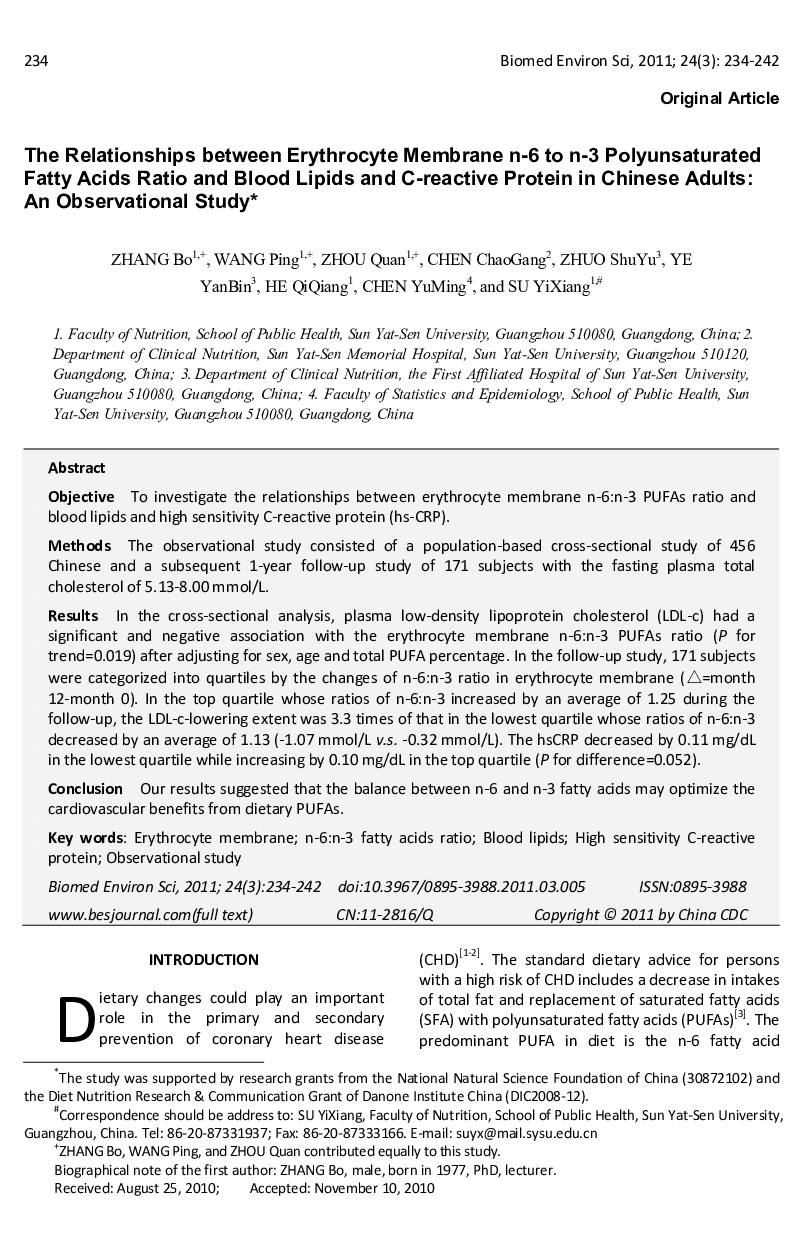| کد مقاله | کد نشریه | سال انتشار | مقاله انگلیسی | نسخه تمام متن |
|---|---|---|---|---|
| 4196005 | 1278653 | 2011 | 9 صفحه PDF | دانلود رایگان |

ObjectiveTo investigate the relationships between erythrocyte membrane n-6:n-3 PUFAs ratio and blood lipids and high sensitivity C-reactive protein (hs-CRP).MethodsThe observational study consisted of a population-based cross-sectional study of 456 Chinese and a subsequent 1-year follow-up study of 171 subjects with the fasting plasma total cholesterol of 5.13-8.00 mmol/L.ResultsIn the cross-sectional analysis, plasma low-density lipoprotein cholesterol (LDL-c) had a significant and negative association with the erythrocyte membrane n-6:n-3 PUFAs ratio (P for trend=0.019) after adjusting for sex, age and total PUFA percentage. In the follow-up study, 171 subjects were categorized into quartiles by the changes of n-6:n-3 ratio in erythrocyte membrane (Δ=month 12-month 0). In the top quartile whose ratios of n-6:n-3 increased by an average of 1.25 during the follow-up, the LDL-c-lowering extent was 3.3 times of that in the lowest quartile whose ratios of n-6:n-3 decreased by an average of 1.13 (−1.07 mmol/L v.s. −0.32 mmol/L). The hsCRP decreased by 0.11 mg/dL in the lowest quartile while increasing by 0.10 mg/dL in the top quartile (P for difference=0.052).ConclusionOur results suggested that the balance between n-6 and n-3 fatty acids may optimize the cardiovascular benefits from dietary PUFAs.
Journal: Biomedical and Environmental Sciences - Volume 24, Issue 3, June 2011, Pages 234-242